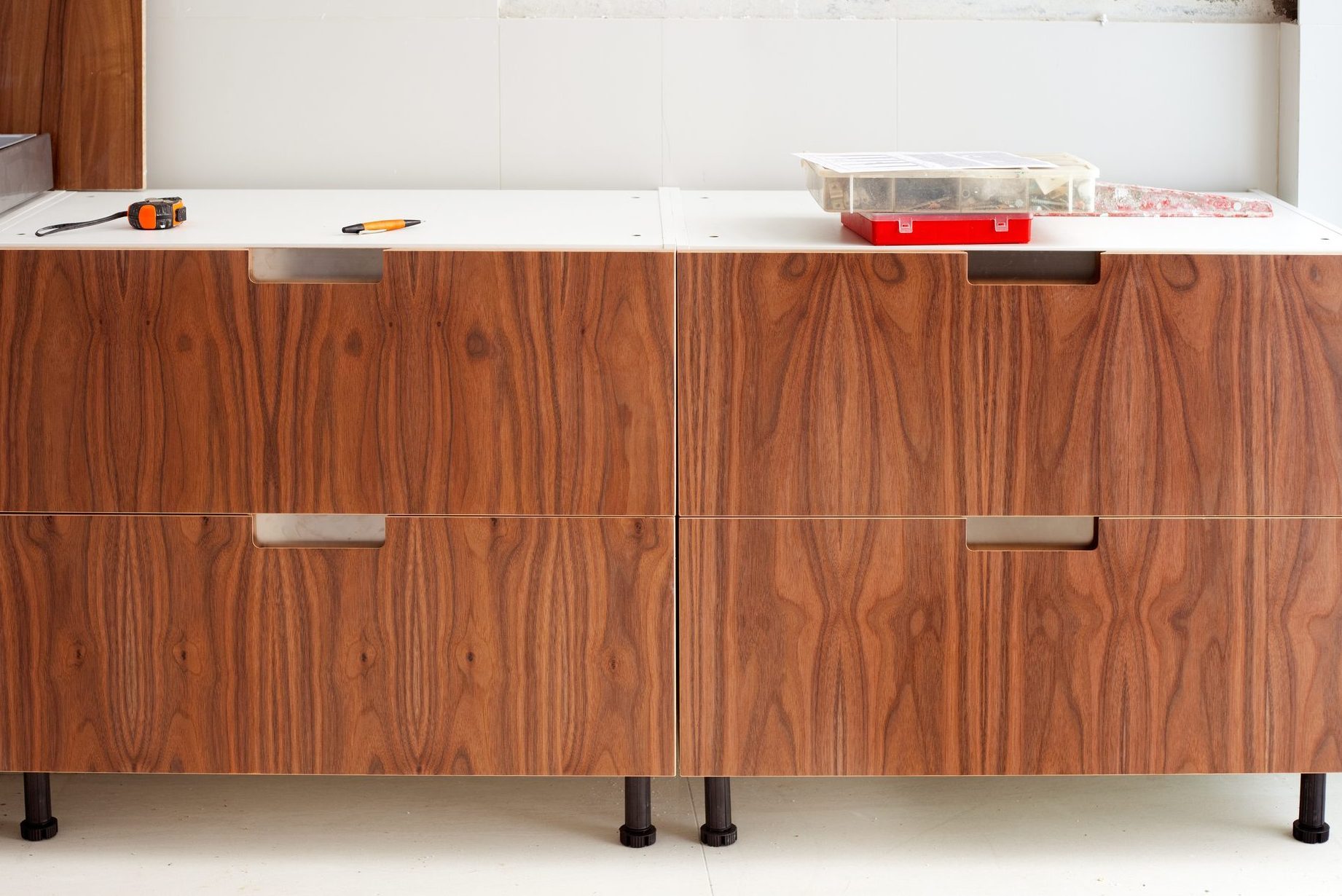Wondering what you should know about walnut wood before your next woodworking project? A pro woodworker shares his insights.

Woodworking: What To Know About Walnut Wood

Walnut is one of the most popular domestic woods for woodworkers of all skill levels. Widely available in the U.S. and considered a premium domestic hardwood, its very presence seems to elevate the perceived value of your woodworking projects.
A real delight to work with hand tools, it also machines easily and finishes beautifully. I will walk you through everything you need to know about walnut so you have the confidence to use it in your next woodworking project.
On This Page
What Is Walnut Wood?
Walnut is by definition a hardwood. That means it comes from a deciduous tree (i.e. one that sheds its leaves each autumn) called the black walnut, AKA American walnut.
Walnut heartwood has a rich, chocolaty brown color. Other colors can be present, including purples, greens and golds. The sapwood ranges from a pale creamy color to almost white. These color variations are common in fresh timber. However, the kiln drying process can mute them, creating a more homogenous color across the board.
While it is harder to find, air-dried walnut preserves greater color variations and, in my experience, tends to have a slightly more purple tone. Regardless of what type of drying process your lumber went through, walnut is a forgiving wood to work with.
Types of Walnut Wood
The most common walnut species are:
- Black walnut: Often referred to simply as “walnut,” this wood comes from trees that grow all over the Eastern U.S. This wood has good dimensional stability and a Janka hardness rating of 1,010 pound-force (lbf). The Janka rating comes from a test that measures the density of wood species. For context, cherry has a Janka rating of 995 lbf and white oak 1,360 lbf.
- English walnut: Sometimes called European walnut, English walnut is similar in color and workability to its American cousin. I have found the color tends to be slightly paler, more like milk chocolate. It is slightly harder than the American walnut with a Janka rating of 1,220 lbf. Fun fact: English walnut produces the most common form of edible walnuts.
- Claro walnut: Grown in California and Oregon, Claro walnut is used as rootstock in walnut orchards. These orchard-grown trees can result in irregular grain patterns and are sometimes grafted with English walnut branches. That results in vibrant, colorful streaks near the graft, called marbling.
- Butternut: Yes, butternut is a member of the walnut family! While sometimes referred to as white walnut or even poor man’s walnut, don’t let the pejorative fool you: Butternut is a beautiful wood. It has a lovely golden-tan color to the heartwood and is a dream to work with hand tools. However, it’s soft, with a Janka rating of 490 lbf, so be mindful what projects you choose to make with it.
The Pros and Cons of Walnut Wood
Pros
- Availability: Walnut can be found practically anywhere you purchase domestic hardwoods, from distributors to big box stores.
- Color: Those deep chocolaty browns, vibrant purples and subtle greens and golds are truly lovely. When you see the depth of color in a nice piece of walnut, you understand why folks love with this material.
- Workability: If you enjoy hand-tool woodworking, walnut is a joy. It planes beautifully and is forgiving to the cutting edge. It also generally machines well.
- Finishing: There always seems to be magic in applying that first coat of finish to any project, but oiling walnut is an are-inspiring spectacle every time.
Cons
- Price: Walnut is considered a premium domestic hardwood, so be prepared to pay a price for that label. While standard flat-sawn walnut isn’t excessively pricey, any boards with figure or sought-after irregularities can drain your wallet quickly.
- Color changing: While walnut is beautiful, it’s also photoreactive and will oxidize over the years to an orange-honey color.
- Durability: Walnut is not soft, but it’s not rock-hard either. It will dent if you’re reckless with it, so beware of small children or animals damaging that expensive walnut slab you’re hoping to use as a dining table.
What is Walnut Used For?
Due to its popularity, walnut is sought out for high-end furniture production, cabinetry, flooring, veneer and architectural mill work.
Walnut Wood Cost Purchasing
Expect to pay from $8 to $25 per board foot, depending on the grade and figure. For comparison, most other furniture-grade domestic hardwoods will cost $5 to $15 per board foot.
While the cost won’t be prohibitive for all beginners, I encourage folks to avoid walnut early on. The price may discourage newer woodworkers for fear of messing up an expensive piece of lumber.




















